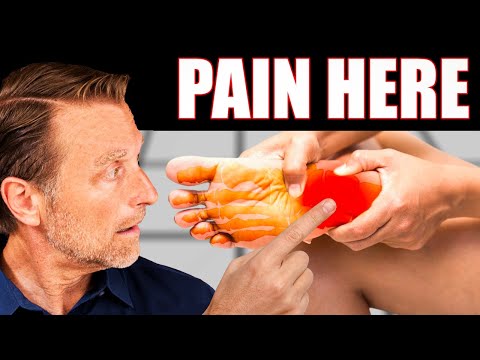Have you tried everything to fix your plantar fasciitis, but you’re still experiencing foot pain? In this video, I’ll show you how to fix plantar fasciitis with one simple plantar fasciitis stretch. Find out how to get foot pain relief at home!
0:00 Introduction: How to fix plantar fasciitis
0:35 Plantar fasciitis pain
0:51 Plantar fasciitis stretches
1:43 Low-carb diet for plantar fasciitis pain
1:57 The best plantar fasciitis remedy
5:03 Plantar fasciitis pain relief testimonials
Videos on Healthy Keto and Intermittent Fasting:
▶️ https://youtu.be/vMZfyEy_jpI
▶️ https://youtu.be/mBqpaAKtnXE
If the bottom of your foot is inflamed, you don’t want to stretch it! Stretching the calf or massaging the bottom of the foot can make plantar fasciitis pain worse.
Before you perform this plantar fasciitis stretch, rate your pain on a scale of 1 to 10 when putting pressure on your foot.
To perform the stretch, sit down and bend your toes downward. This shouldn’t hurt! This exercise stretches the opposite muscles and fascia. After performing this stretch, rerate your foot pain.
Another surprising solution for plantar fasciitis is a low-carb diet combined with intermittent fasting. Inflammation that can cause plantar fasciitis occurs when your carbs are too high.
The root cause of plantar fasciitis is too much calcium. Magnesium controls calcium in the body and can get rid of excess calcium. Cramps and plantar fasciitis are common signs of a magnesium deficiency. Try taking 400 mg of magnesium glycinate each day to combat plantar fasciitis.
Vitamin D helps with many calcium-related issues and has potent anti-inflammatory effects. Consider taking 20,000 IU of vitamin D daily for plantar fasciitis pain.
Magnesium won’t work well without vitamin D and vice versa. If you take too much vitamin D without magnesium, you’ll end up with a magnesium deficiency.
Vitamin D deficiency can contribute to plantar fasciitis, but you may also notice other problems, such as lower back pain, decreased immune function, and muscle achiness.
Always take vitamin D with vitamin K2, which helps remove calcium from the soft tissues.
Do these plantar fasciitis stretches several times daily until your foot and heel pain goes away. Vitamin D, K2, and magnesium combined with keto and intermittent fasting may significantly reduce plantar fasciitis pain in the long term.
Dr. Eric Berg DC Bio:
Dr. Berg, age 59, is a chiropractor who specializes in Healthy Ketosis & Intermittent Fasting. He is the author of the best-selling book The Healthy Keto Plan, and is the Director of Dr. Berg Nutritionals. He no longer practices, but focuses on health education through social media.
Follow Me On Social Media:
Facebook: https://bit.ly/FB-DrBerg
Instagram: https://bit.ly/IG-DrBerg
Listen to my Podcast: https://bit.ly/drberg-podcast
TikTok: https://bit.ly/TikTok-DrBerg
Disclaimer:
Dr. Eric Berg received his Doctor of Chiropractic degree from Palmer College of Chiropractic in 1988. His use of “doctor” or “Dr.” in relation to himself solely refers to that degree. Dr. Berg is a licensed chiropractor in Virginia, California, and Louisiana, but he no longer practices chiropractic in any state and does not see patients, so he can focus on educating people as a full-time activity, yet he maintains an active license. This video is for general informational purposes only. It should not be used to self-diagnose, and it is not a substitute for a medical exam, cure, treatment, diagnosis, prescription, or recommendation. It does not create a doctor-patient relationship between Dr. Berg and you. You should not make any change in your health regimen or diet before first consulting a physician and obtaining a medical exam, diagnosis, and recommendation. Always seek the advice of a physician or other qualified health provider with any questions you may have regarding a medical condition.
#keto #ketodiet #weightloss #ketolifestyle
Thanks for watching! I hope you’ll try this plantar fasciitis stretch for foot pain relief at home. I’ll see you in the next video.



